5D Series Cast Iron QD Bushing Sheaves Pulley for “D” Belts
5D series five-groove QD bushed sheaves are manufactured for D-series classic v-belts and D-banded belts; they range from 12.64″ to 58.64″ in diameter. Depending on the sheave size, they are made to use an F, J, or M QD (quick detachable) bushings, which we also stock. Most of our 5D QD sheaves are manufactured from a high-strength grade 35 cast iron, are phosphate-coated, and are painted for anti-corrosion. All of them are balanced at the factory for smooth machinery operation.
D Series Cast Iron QD Bushing Sheaves Pulley for “D” Belts
5D series five-groove QD bushed sheaves are making for D-series classic v-belts and D-banded belts; they range from 12.64″ to 58.64″ in diameter. Depending on the sheave size, they are made to use an F, J, or M QD (quick detachable) bushings, which we also stock. Most of our 5D QD sheaves are manufactured from a high-strength grade 35 cast iron, are phosphate-coated, and are painted for anti-corrosion. All of them are balanced at the factory for smooth machinery operation.
5D series five-groove QD bushed sheaves Size Chart
|
Size
|
Bushing Type
|
Type
|
Pitch Diameter
|
Outside Diameter
|
(E)
|
(F)
|
(L)
|
(M)
|
Sheave Weight (LBS)
|
|---|---|---|---|---|---|---|---|---|---|
| 5D120F | F | A | 12.0″ | 12.64″ | 1-23/32″ | 7-1/2″ | 3-3/4″ | 2-1/32″ | 93 |
| 5D130F | F | A | 13.0″ | 13.64″ | 1-23/32″ | 7-1/2″ | 3-3/4″ | 2-1/32″ | 96 |
| 5D135F | F | A | 13.5″ | 14.14″ | 1-23/32″ | 7-1/2″ | 3-3/4″ | 2-1/32″ | 102 |
| 5D140F | F | A | 14.0″ | 14.64″ | 1-23/32″ | 7-1/2″ | 3-3/4″ | 2-1/32″ | 106 |
| 5D145F | F | A | 14.5″ | 15.14″ | 1-23/32″ | 7-1/2″ | 3-3/4″ | 2-1/32″ | 112 |
| 5D150F | F | A | 15.0″ | 15.64″ | 1-23/32″ | 7-1/2″ | 3-3/4″ | 2-1/32″ | 120 |
| 5D155F | F | A | 15.5″ | 16.14″ | 1-23/32″ | 7-1/2″ | 3-3/4″ | 2-1/32″ | 125 |
| 5D160F | F | A | 16.0″ | 16.64″ | 1-23/32″ | 7-1/2″ | 3-3/4″ | 2-1/32″ | 130 |
| 5D180J | J | A | 18.0″ | 18.64″ | 1-7/8″ | 7-1/2″ | 4-5/8″ | 1″ | 150 |
| 5D200J | J | A | 20.0″ | 20.64″ | 1/8″ | 7-1/2″ | 4-5/8″ | 2-3/4″ | 160 |
| 5D220J | J | A | 22.0″ | 22.64″ | 1/8″ | 7-1/2″ | 4-5/8″ | 2-3/4″ | 190 |
| 5D270M | M | A | 27.0″ | 27.64″ | 11/32″ | 7-1/2″ | 6-3/4″ | 13/32″ | 260 |
| 5D330M | M | A | 33.0″ | 33.64″ | 11/32″ | 7-1/2″ | 6-3/4″ | 13/32″ | 320 |
| 5D400M | M | A | 40.0″ | 40.64″ | 11/32″ | 7-1/2″ | 6-3/4″ | 13/32″ | 390 |
| 5D480M | M | A | 48.0″ | 48.64″ | 11/32″ | 7-1/2″ | 6-3/4″ | 13/32″ | 450 |
| 5D580M | M | A | 58.0″ | 58.64″ | 11/32″ | 7-1/2″ | 6-3/4″ | 13/32″ | 500 |
Related Matching D-Series, D-Series Banded V-Belts
(1) D-Series V-Belts
Classic D-Series V-Belts have a 1.25″ top-width, 0.75″ thickness, and a 40° angle. Additionally, D V-belts are one of the oldest styles of V-Belts in the industry. Because of their long-term success and economical operation, they are also one of the industry’s most widely used belt series. The premium D-series v-belts we supply are manufactured under ISO 9001 specifications, are oil and heat resistant, and directly interchange with other brands. They are constructed of a natural rubber compound with polyester cords and use cotton with a polyester blend cover for high durability.
 |
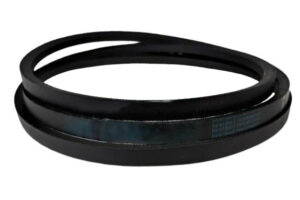 |
(2) D-Series Banded V-Belts
D-series v-belts are a part of the “classic” lineup of v-belts because they are one of the oldest style belts used and one of the most common. Our belts are manufactured by ARPM standards and offer superior strength, durability, and performance. D-series v-belts have a 1-1/4″ top-width per belt (band/ rib).
Related QD Bushings | Quick Disconnect Bushings
QD bushings are utilized throughout the industrial power transmission and agricultural industry for various sprockets, sheaves, pulleys, and synchronized drives. They are designed for easy installation and easy uninstallation; they are also commonly referred to as quick-disconnect bushings. QD bushings can help conventional mounting with the flange outboard and reverse mounting to where the flange is inboard and utilize a single split that extends through the entire bushing length. Our QD bushings interchange with other brands and are made from high-grade steel precision machined for perfect application fitment. QD bushings‘ benefits over different styles include; ease of installation/ uninstall, superior holding power, and extreme strengths. We stock all the standard sizes of QD bushings and supply custom QD bushings upon request.
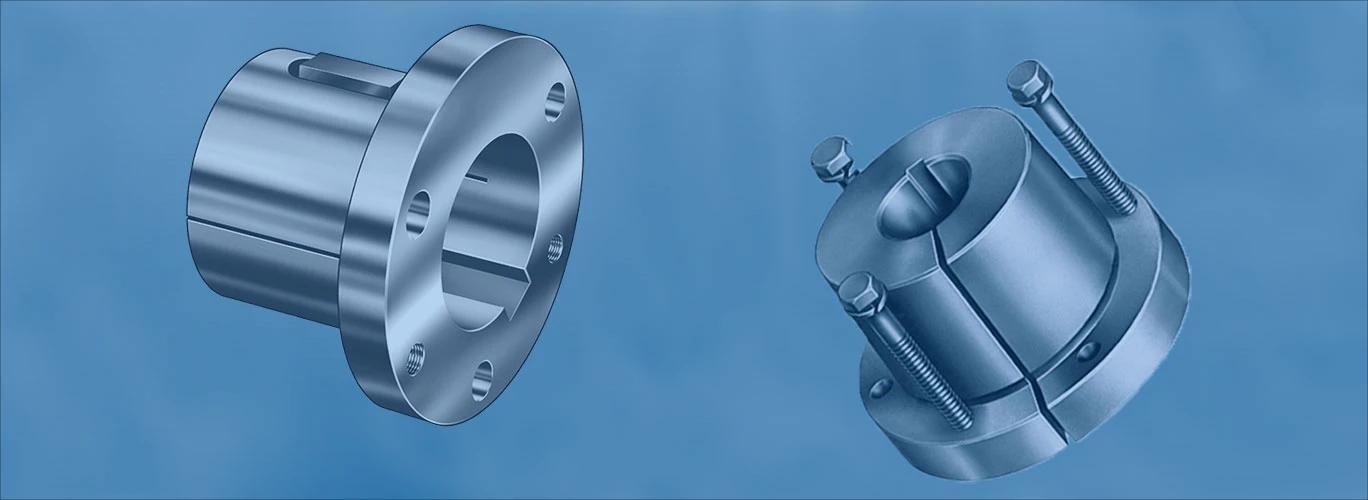 |
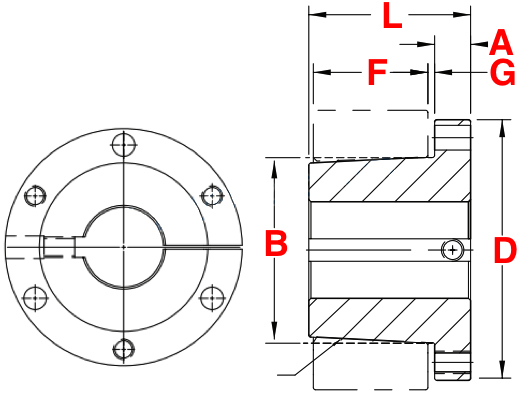 |
|
Bushing Type
|
(A)
|
(B)
|
(D)
|
(E)
|
(F)
|
(G)
|
(L)
|
Bolt Circle
|
Cap Screws Required
|
Min. Stock Bore
|
Max. Bore W/ KW
|
Max Bore W/ Shallow KW
|
Set Screw Size
|
Avg. Weight (LBS)
|
|---|---|---|---|---|---|---|---|---|---|---|---|---|---|---|
| F | 0.813″ | 4.437″ | 6.625″ | 2.813″ | 2.500″ | 0.423″ | 3.625″ | 5.625″ | 3 – 0.563X3.625 | 1.000″ | 3.313″ | 3.938″ | 0.5 – 13 | 11.5 |
| J | 1.000″ | 5.148″ | 7.250″ | 3.500″ | 3.188″ | 0.423″ | 4.500″ | 6.250″ | 3 – 0.625X4.5 | 1.438″ | 3.750″ | 4.500″ | 0.625 – 11 | 18.0 |
| M | 1.250″ | 6.500″ | 9.000″ | 5.500″ | 5.188″ | 0.423″ | 6.750″ | 7.875″ | 4 – 0.75X6.75 | 1.938″ | 4.750″ | 5.500″ | 0.75 – 10 | 37.0 |
How to Measure V-Belt Pulleys?
One of the ever-growing and most widely used product types in the power transmission and automotive industries is the V-belt pulley, also known as the “sheave.” A V-belt pulley is an attachment that transfers energy between axles with the help of a V-belt. However, to keep this vital pair of devices functioning correctly, one must secure the appropriate v belt pulley replacement when an older one gets worn down. To do this, you need to know the size, dimensions, and type of your V-belt pulley so that the replacement will operate adequately. Learning to measure a V-belt pulley’s size and calculate its dimensions are simple tasks; however, correctly identifying a V-belt pulley type can be complex. V-belt pulleys come in various styles and options, including A-section, B-section, C-section, D-section, 3V-section, 5V-section, 8V-section, variable pitch, double groove, and metric pulleys. We stock over 8,000 s of different V-belt pulleys alone.
Inspection Knowledge of Pulley Belt and Belt
First, check the tension of the pulley belt. At this time, you can use your thumb to press the strap between the two pulleys firmly. The pressing force is about 10kg. If the necessary amount of the belt is about 10mm, the belt tension is considered appropriate. And if the reduction is too significant, it is believed that the pressure of the belt is insufficient. If the belt shows almost no reduction, it is considered that the belt tension is too high. When the stress is low, the spa pulley and the belt are prone to slip.
When the tension is too large, it is easy to damage the bearings of various auxiliary machines. To this end, the relevant adjustment nut or bolt should be loosened to adjust the belt’s tension to an excellent state. Condition. The old belt is severely worn, so the contact area between the belt and the pulley is sharply reduced. At this time, as long as the belt is pressed hard, the pulley will sink deeply into the groove of the pulley. The rubber of the belt also has an aging problem. If the rubber of the belt is seriously aged, the new belt must be replaced in time.
5D series five-groove QD bushed sheaves Technological Processing

Packing Shipping Delivery
  |
 |
|
 |
 |
|
How to choose power transmissions parts and industrial products which meet our requirement
| Chains | Sprockets | Pulleys | Timing belt Pulley | V-belt Pulley |
| Sheaves | Coupings | Bush &Hub | Gear& Rack | V-Belt |
| Locking Assembly | Pulley | Gearbox | Reducer | Shaft Collar |
| Rod End Bearing | Clevis | PTO | Chain Guide | Belt Guide |
| Rubber Buffer | Chain Tensioner | PTO Drive Shafts | Universal Joints | Roller Chains |
| Conveyor Chains | V-Belts | Worm Gearbox | Helical Gear | Worm |
| Agricultural Chain | CNC Proces Parts | Casting | Stamping | |
| Powder Metallurgy | CNC Proces Parts | Casting | Stamping |
What Products Do you sell ?
We are a group of factories, give customer one stop solution of power transmission and industrial products. We are in the position to supply wide range of products, including chains, sprockets, v-belt and v-belt pulleys, timing belt and timing belt pulleys, gears, speed reducers, motors, racks, couplings, and many other parts, like locking assembly, taper bushing, Chain guide, shaft collar, torque limiter, cam clutch, universal joint, motor base and motor slide, rod end, clevis, rubber mount, etc. We make special parts according to drawings and/or samples.
How to choose a gearbox which meets our requirement?
You can refer to our catalogue to choose the gearbox or we can help to choose when you provide
the technical information of required output torque, output speed and motor parameter etc.
What information shall we give before placing a purchase order?
a) Type of the gearbox, ratio, input and output type, input flange, mounting position, and motor informationetc.
b) Housing color.
c) Purchase quantity.
d) Other special requirements.
What industries are your gearboxes being used?
Our gearboxes are widely used in the areas of textile, food processing, beverage, chemical industry,
escalator,automatic storage equipment, metallurgy, tabacco, environmental protection, logistics and etc.
What is the producing process?
Production process including raw material cutting, machine processing, grinding, accessories cleaning, assemble, cleaning, stoving, oil coating, cover pressing, testing, package.
How to control the products quality?
Combining advanced equipment and strict management, we provide high standard and quality bearings for our customers all over the world.
What is the transportation?
-If small quantity , we Suggest to send by express, such as DHL,UPS, TNT FEDEX. If large amount, by air or sea shipping.
Can we design packaging?
-Yes. Default is regular packing, and we can make customer's own packing.
Can you provide OEM service?
-Yes, we work on OEM orders. Which means size, quantity, design, packing solution, etc will depend on your requests; and your logo will be customized on our products.
Can you give me discount on Power Transmissions Parts and Industrial parts?
-Yes, of course. Pls. send me your Email, you'll get more
Q: Are You a trading company or a manufacturer?
A: We Are the factory and have our Own trading company
Q: How Can I get an offer?
A: please send US quotation information: drawings, materials, weight, quantity and requirements, we can accept PDF, ISGS, DWG, STEP file format. If you don't have the drawings, please send us the samples, we can also quote you according to your samples.
Q: What is your minimum order size?
A: it is usually 100 pieces, but a low quantity is acceptable under some special circumstances.
Q: Do you provide samples? Is it free or extra?
A: Yes, we can provide samples free of charge, but we don't pay the freight.
Q: What is the lead time for mass production?
A: honestly, it depends on the number of orders. Normally, if you don't need the tools, deposit them after 30 days or so.
Q: What if the parts don't Work?
A: we can guarantee the quality, but if it happens, please contact us immediately, take some photos, we will check the problem and solve it as soon as possible.
Q: What are your terms of payment?
A: payment is less than US $1000,100% in advance. Payment: $1000,50% wire transfer in advance, balance before shipment,Other Terms of payment are negotiable

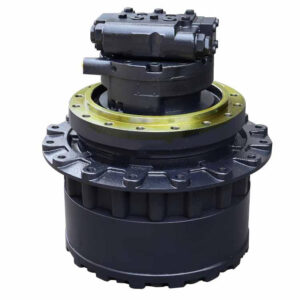
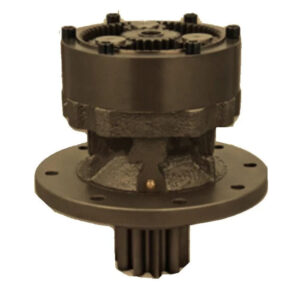
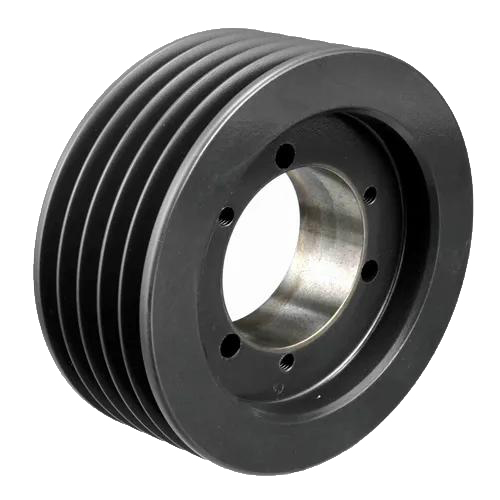
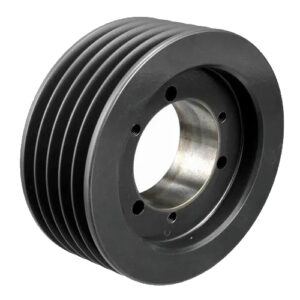
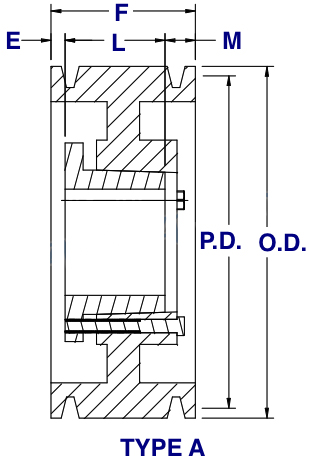
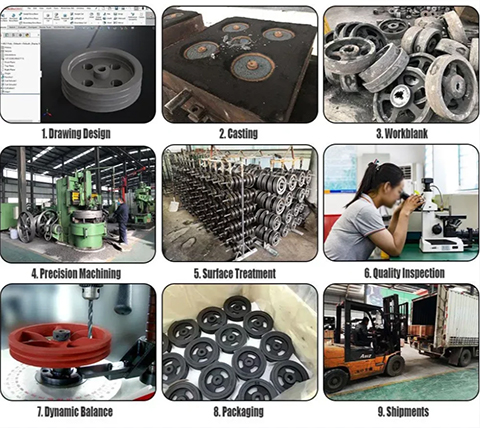
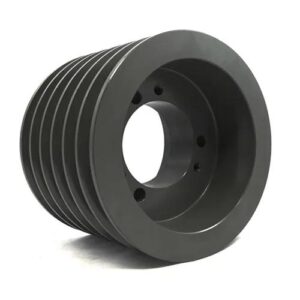
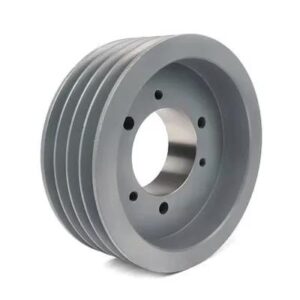
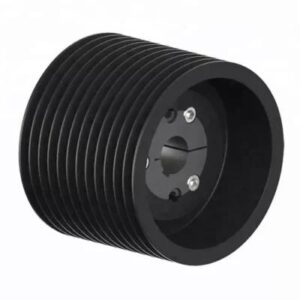
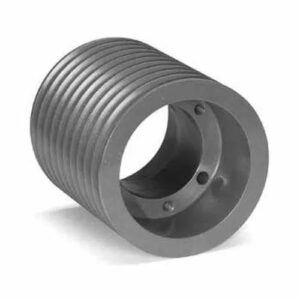
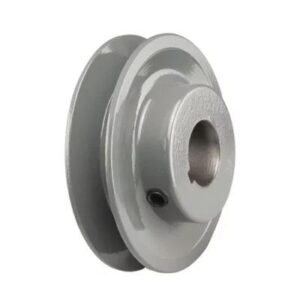
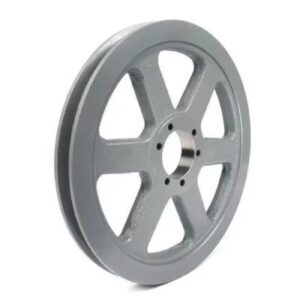
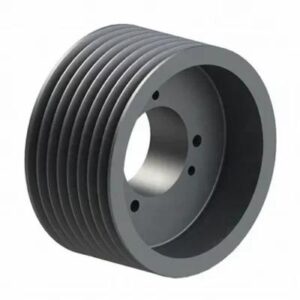
Reviews
There are no reviews yet.